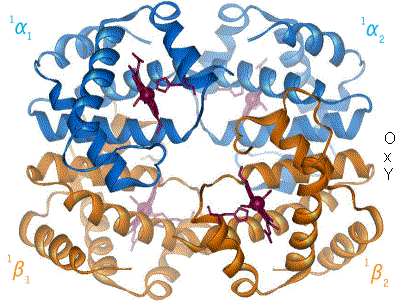Several years ago I was teaching an Introductory Biology course for non majors at a community college. It was for sure challenging, with the majority of students being there only to get the GE science requirement, and therefore quite uninterested in biology. One of those students was a hopelessly hapless woman who was taking the course for the second time. Straddled with family and health issues, she would stay after class to talk to me, and in one of those conversations she referred to the day when the previous instructor made the class "play" chromosomes to illustrate mitosis. Her face lighted up as she listed the names of the phases of cell division (metaphase, telophase). I was fascinated. Here she was, the typical clueless F student, remembering that particular information. While acting mitosis out seemed like a childish act, it had worked for this particular student- so I decided to try this approach some day.
I am aware of the controversies about the validity of learning styles, but as far as I am concerned, they exist. Personally, I am what would be called a visual learner with strong kinesthetic bias- in order to learn I need to "do," even if it is only highlighting, drawing, or doodling.
"Making up about 5% of the population, tactile and kinesthetic learners absorb information best by doing, experiencing, touching, moving or being active in some way."
My first experience was what became later the "Hemoglobin dance." Hemoglobin is the protein in the red blood cells that transports oxygen. Carbon dioxide is transported through different mechanisms, the most important being a chemical reaction:
CO2 + H2O <-------> H2CO3 <-----------> H+ + HCO3-
Carbon dioxide, helped by the enzyme carbonic anhydrase (in the red blood cells), combines with water to produce the weak carbonic acid, which immediately dissociates to bicarbonate and hydrogen ion. Ions move in and out the red blood cells, and this reversible reaction moves according to the gradient of gasses (very different in lungs and tissues). It is one of those dynamic processes that is hard to explain on diagrams. A year after that conversation about mitosis, I was facing a physiology class dozing off through my explanation of gas transport in the blood. I decided to act. I asked for volunteers and wrote a long list that included hemoglobin, carbons, oxygens, hydrogens, carbonic anhydrase, and the other molecules involved. Tempted by the possibility of extra credit points, carbons and other atoms joined hands to form molecules. A circle of students created a red blood cell. Carbon dioxides dissociated, oxygens bound to hemoglobin, and students were now wide awake and laughing. These days the Hb dance is a solid part of the chapter dedicated to respiratory system. Maybe, some day, we could make it into a prize winner video similar to the "Dance your Ph.D" ones.
Besides the Hb dance, other favorite candidates have involved meiosis (mitosis is ok, but not nearly as fun as meiosis, the cell division that gives rise to reproductive cells), and my absolute favorite, the immune system.
This year is the first time I have decided to make the Immune system play into a (small assignment). If you think about it, the immune response is very much like a Shakespeare play, full of interactions, violence, murders, and other interesting events. Immunology, the science dedicated to the defense mechanisms of the body, is one of the hardets subjects to explain. While most topics have a beginning and an end, and are therefore suitable for a linear explanation, explaining the immune response requires first a dissection of each of the components separately, and then putting them all together into a dynamic framework. By the time one gest there the students have passed out long ago.
So in the Immune system play, students are assigned roles of different components of the immune system. I plan to give them the roles in advance so they can read up and prepare. In the class, I make a general introduction and then the play starts. I usually break it down to different pathways. "What happens if a bacterium invades?" Neutrophils come to eat them. Lymphocytes develop an antibody response, Antibodies bind and kill or neutralize. I bring props (shawls, hats) to use as signaling molecules or toxins. As the action unfolds, I freeze the scene and explain and write on the board. At the end of the session, students would have seen most of the aspects of the immune response acted out.
Which reminds me, I should get started on the screenplay...

That sounds awesome! I want to take your class!
ReplyDeleteThank you :) I will post soon about making videos!
ReplyDelete